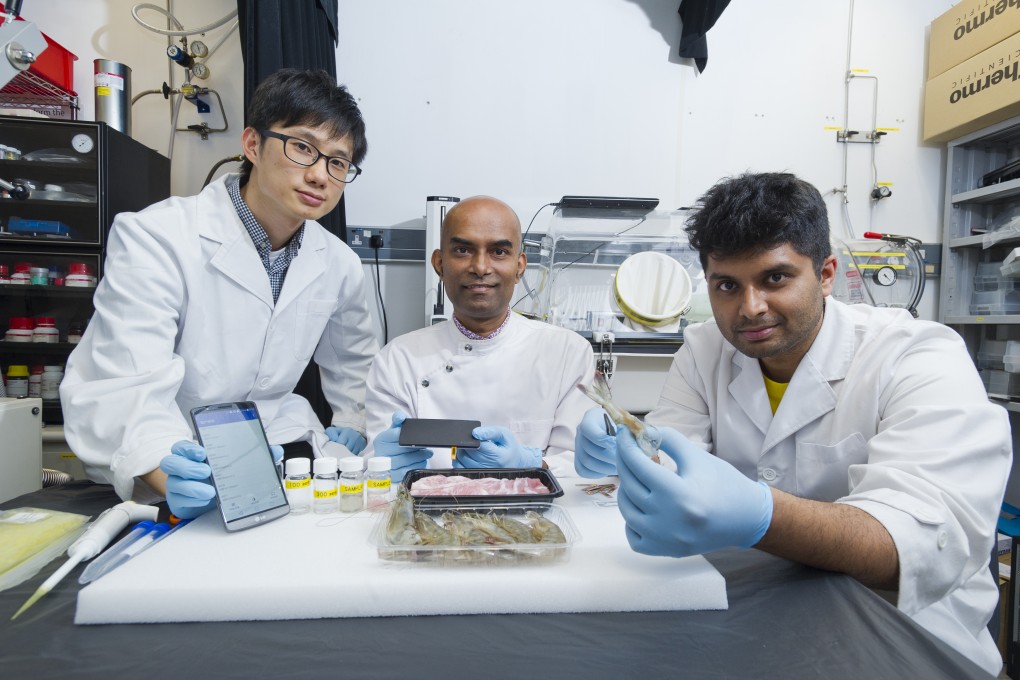Handy sensor enhances food safety

[Sponsored article]
A new system for testing food safety developed by an interdisciplinary research team at City University of Hong Kong (CityU) can rapidly detect contaminants in food within several minutes with concentrations of less than 0.2ppm (parts per million).
The new sensor, which can be operated via mobile phone apps, offers rapid and accurate measurements of harmful elements that might be present in some food items such as seafood and meat. With a prototype already in operation, the cost of detecting contaminants is expected to fall.
“We expect the system to be used by the public and private sectors. It can help government departments to monitor food quality and assist supermarkets in testing food on spot,” said Dr Roy Vellaisamy, Associate Professor in the Department of Materials Science and Engineering (MSE), who is leading the project.
The project, titled “Rapid test technology and commercialisation of nano-sensor for detection of chemical contaminants in seafood”, has already attracted a great deal of commercial interest.
It was selected as “Demonstrative Project of Innovative Development for Marine Economy under the National 13th Five-Year Plan” and received a grant worth RMB20 million from the Ministry of Finance, State Oceanic Administration and Xiamen Innov Electronics Tech Co., Ltd. (Xminnov).
The sensor has been designed to detect histamine and formaldehyde, contaminants commonly found in seafood and meat. The existence of histamine indicates food decay because it is generated when bacteria grows in food. Formaldehyde is an illegal additive used in seafood, and is hazardous to human health.
